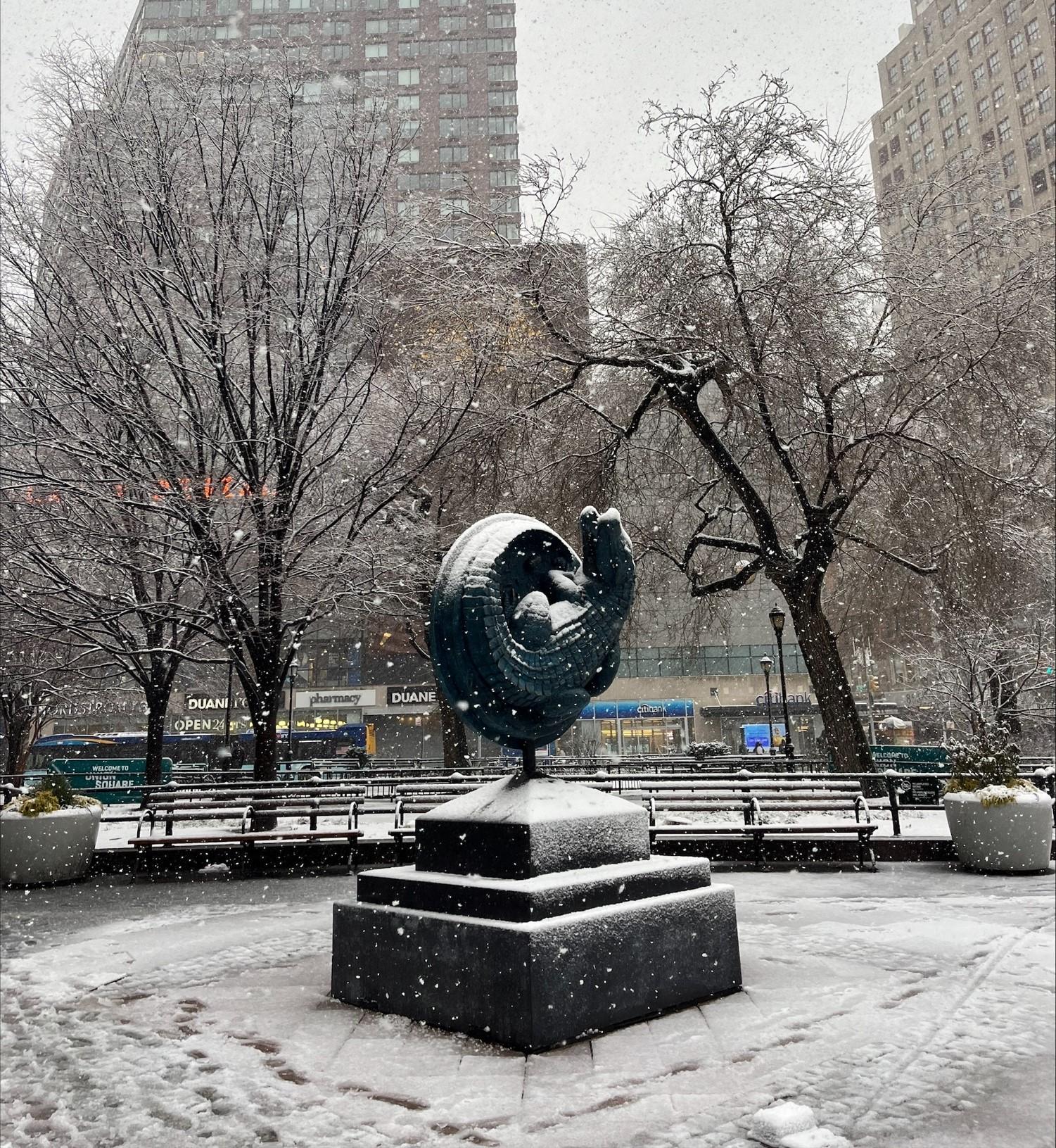Alexander Klingspor
'N.Y.C Legend'
Signed A. Klingspor. Numbered 21/49. Foundry stamp Perseo SA. Bronze, 27.3 cm in diameter. Total height inc. granite base, 40 cm.
Muut tiedot
A monumental version of this sculpture has been standing at Union Square in New York since October 2023.
The theme of this piece is depicting the legend of the alligator in the NYC sewers. Having lived over a decade in Manhattan I wanted to pay tribute to the city I love by portraying one of its most popular urban legends. This artwork deals with two interesting aspects of our world; our need for gods, myths, and legends much like any other civilization prior to ours, and our habit of creating invasive species by moving animals from their natural habitats to human environments. As late as 2020 New York Times reported of actual Florida alligators on the loose in NYC.
Legends and myths have been the backbone of human civilizations for as long as one can remember. During a visit to the Museum of Anthropology in Mexico City I marvelled at how the ancient Mayans, Zapotecs, Aztecs, and many other civilizations depicted gods, rites, legends, and myths through the medium of visual art, sculpture, and architecture. This led me to look at the civilization I live in and reflect upon certain similarities in our time. I started looking for stories that grew from an oral tale into other mediums such as paintings, songs, and more modern formats such as film. When I started doing this research, the beloved tale of the alligators in the New York sewer systems fit all these requirements. Having lived as an artist for many years in NYC I felt excited to get a chance to create a visually stunning piece about a creature in a city that I have a personal connection to.
Tales of the alligators in New York stem from actual facts; Alligators are found in New York City every now and then. The first findings were made in the beginning of the last century, and as late as 2020 New York Times reported of actual sightings in Manhattan. Occasionally, alligators kept as pets in the city are released by irresponsible owners who no longer want to take care of them. The legend that has formed because of this thoughtless behaviour has many versions. One version tells of an albino race of alligators living in the New York sewers, mutated and lethal. Another version became a feature film; In the 1980’s, the horror movie “Alligator” was released in the US. It featured a giant 36-foot mutated man-eating monster that lived in the city sewers of Chicago. Even though the city wasn’t New York, the legend still got its own feature film.
The sculpture I’ve created also reflects upon another aspect of our time; We live in the age of Anthropocene, the human dominated world. Human beings are not only polluting the Earth at an alarming rate, we are also cross-pollinating the entire planet by moving plants and animals across the globe. The responsibilities that come with our god-like technical capabilities are not yet fully recognized and we cause a lot of problems in the natural world. This is why I’ve chosen to depict the alligator in my sculpture surrounded by common trash such as fast food packages, aluminium cans, plastics straws, etc. Objects often found as garbage in drainages and sewers in a big city like NYC.
In some cultures of the world, crocodilian reptiles are regarded as gods. In our industrialized world, we regard ourselves as the masters of our own faith and all the creatures in the animal kingdom as subordinates to us. Yet our fascination for the supernatural continues to flourish, feeding our imagination. Maybe there is some part in us that still wishes to worship mystical creatures like the alligators by creating modern legends about them.
Alexander Klingspor
N.Y.C Legend will be on display in Triangle Plaza of Union Square Park until October 2024.



























































